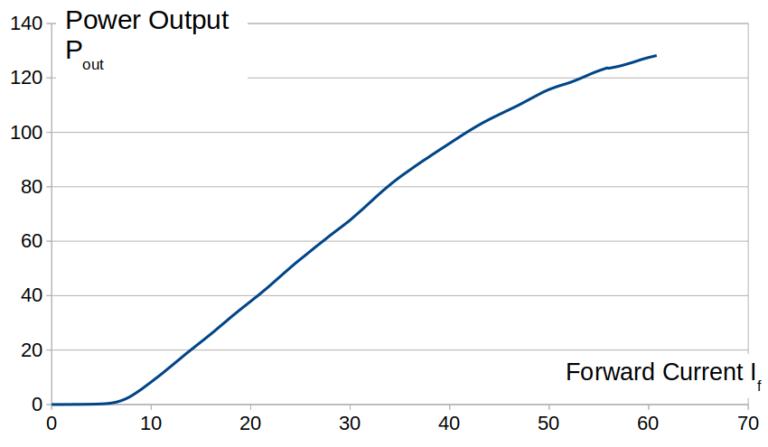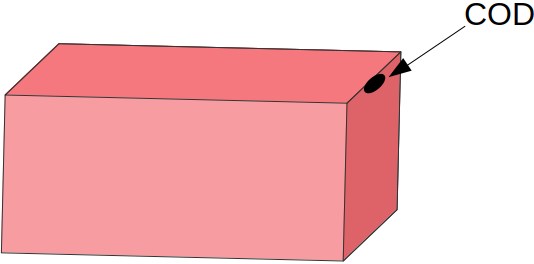CATEGORIES
Irreversible Damage
Heat while Operating

Thermal Rollover on a P/I curve measurement from a laser diode. The power output does not increase linearly with the forward current The heat in the laser diode reduces its efficiency..
Current Peaks
Under the operation conditions defined by the manufacturer, laser diodes can show very high reliability with lifetimes exceeding several thousand hours. Poor thermal management and high operating currents are the main aging mechanisms while current spikes are the main reason for permanent laser damage. Aging mostly translates into a gradually and irreversible lowering of the wall plug efficiency that in itself increases the heat produced in the laser, further accelerating the aging mechanism.
Laser damage caused by current peaks can be observed as permanent reduced output power, a permanent increase of the threshold current, change in beam divergence and in many cases, the sudden incapacity to lase.

Under a very high current, even if this is for a fraction of a second. The laser intensity generated at the laser diode facet will cause its self destruction. COD is the abbreviation for Catastrophic Optical Damage.
Do you like what you see?
We value your feedback, so let us know what you think!
Let us also know which topics you would like to see expanded.
Just give us a call, send us an e-mail or use the form to contact us.
